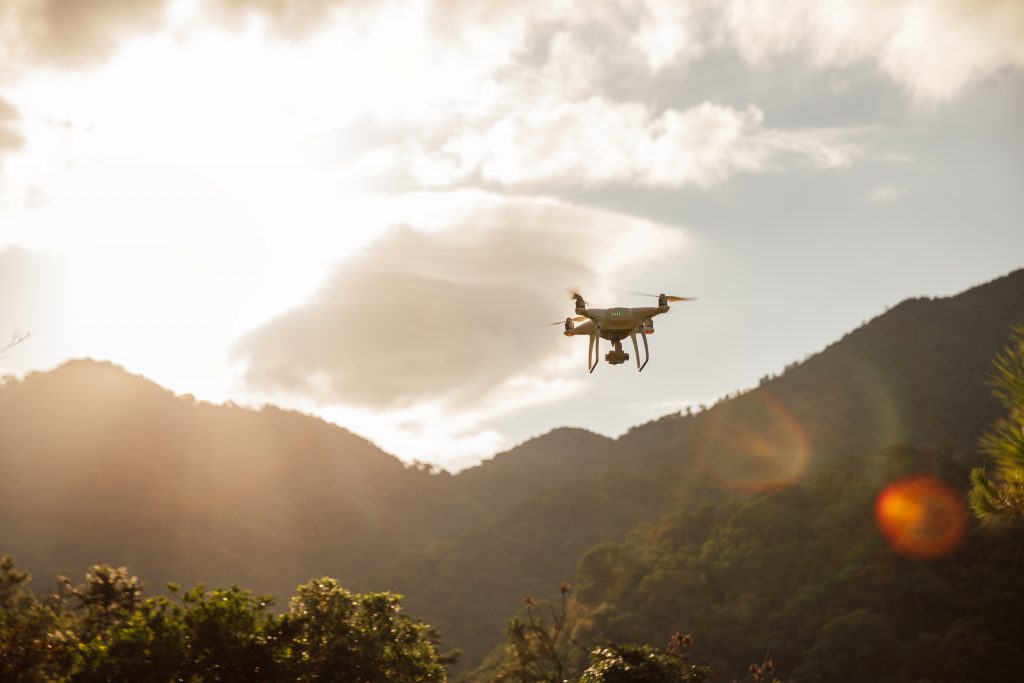In early September, members of our team went to Las Vegas for the Commercial UAV EXPO Americas conference. This event focused on the use of Unmanned Aircraft Systems (UAS) in various commercial industries, as well as had various exhibitors demonstrating the use of integrating or operating commercial UAS. Keynote speakers provided updates on UAS trends and developments, as well as personal perspectives from the top thought leaders.
FUTURE OF FOREST MANAGEMENT
Our teams were in attendance to learn and meet with different vendors who use UAS technology for forest management. For Forest Protection, our operational focus of forest management pertains to aerial surveys for forest defoliation and vegetation, and aerial forest firefighting.
AERIAL SURVEYS
Monitoring forests for defoliation and vegetation is a major component of forest management. Aerial surveys are completed during June and July to check on the forest’s health. The sheer size of the forests makes this project very time-consuming and at times, dangerous for crews as they attempt to review possible inaccessible land and terrain. Flying in rotary or fixed-wing aircraft only allows aircrews and observers to reach a certain altitude that is safe for those in the air and on the ground. UAS, however, can go places that these aircraft cannot. They can diversify in various altitudes, and with the right technology, can extract data such as tree heights, diameter, volume, and counts.
STRUCTURAL FIREFIGHTING
In the United States, 69/347 public safety agencies that purchased drones between 2009 and 2017 were fire departments. (Dronefly.com, 2020). These agencies that invested in UAS use them for search and rescue missions, scene monitoring and post-fire or disaster monitoring. Much like aerial surveys, these UAS can go places humans cannot. Much time and effort, as well as mitigating the risk to the safety of firefighters, can be reduced through the introduction of UAS technology. This technology can be very well suited in situations where ground crews cannot reach the top of a structural fire.
WILDLAND FIREFIGHTING
Firefighting drones used in wildland fires are used for a variety of purposes. Due to their maneuverability, UAS are superior compared to the use of manned aircraft. These devices are also able to fly where aircraft cannot, further providing ground crews with more information on the fire’s behaviour and best plan of attack. Some organizations, use a combination of today’s wildfire fighting approaches and UAS. The UAS acts as the “Birddog” aircraft being controlled from the ground, directing larger aircraft, such as a water bomber, where to drop fire retardant or water.
INDUSTRY DEVELOPMENTS
As UAS technology continues to develop, it has now found applicability in numerous fields. Recently, UAS have found themselves a place in the forestry sector. With the right technology, high-resolution data can be produced in shorter periods of time than traditional fixed or rotary-wing aircraft operations.
Aerial surveys and aerial firefighting are complicated operations and must always consider the safety of civilians and aircrews. At Forest Protection Ltd, we are committed to finding the safest and most effective approach to our operations for all stakeholders. We closely monitor industry trends and developments and implement and innovate as needed.
To learn more about the latest industry innovations we are following, be sure to follow the “Industry Innovation” series for more information.

